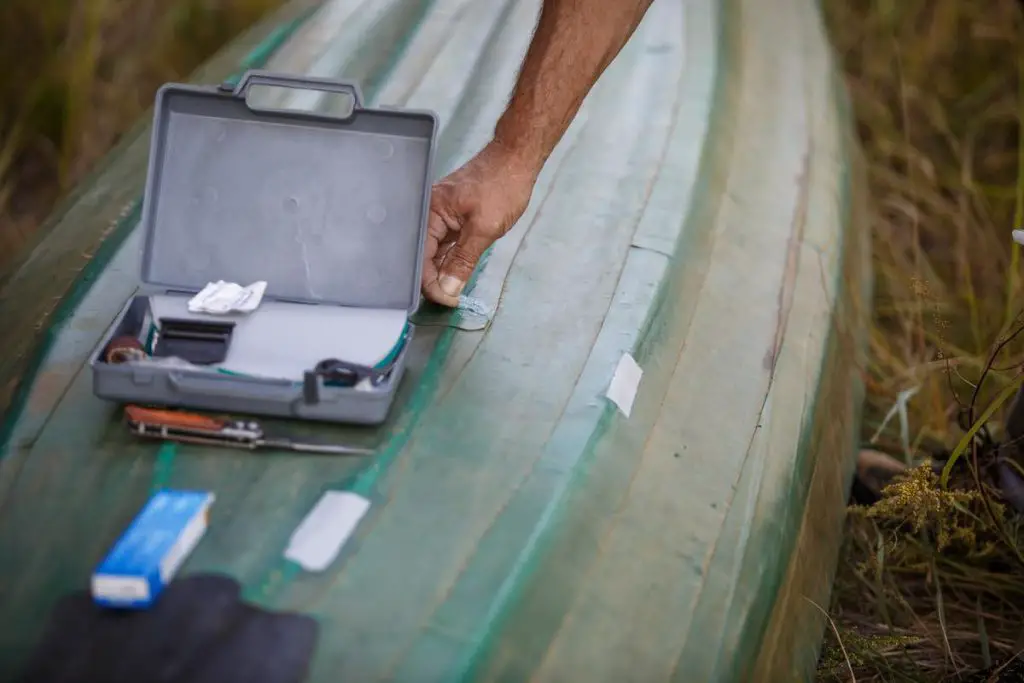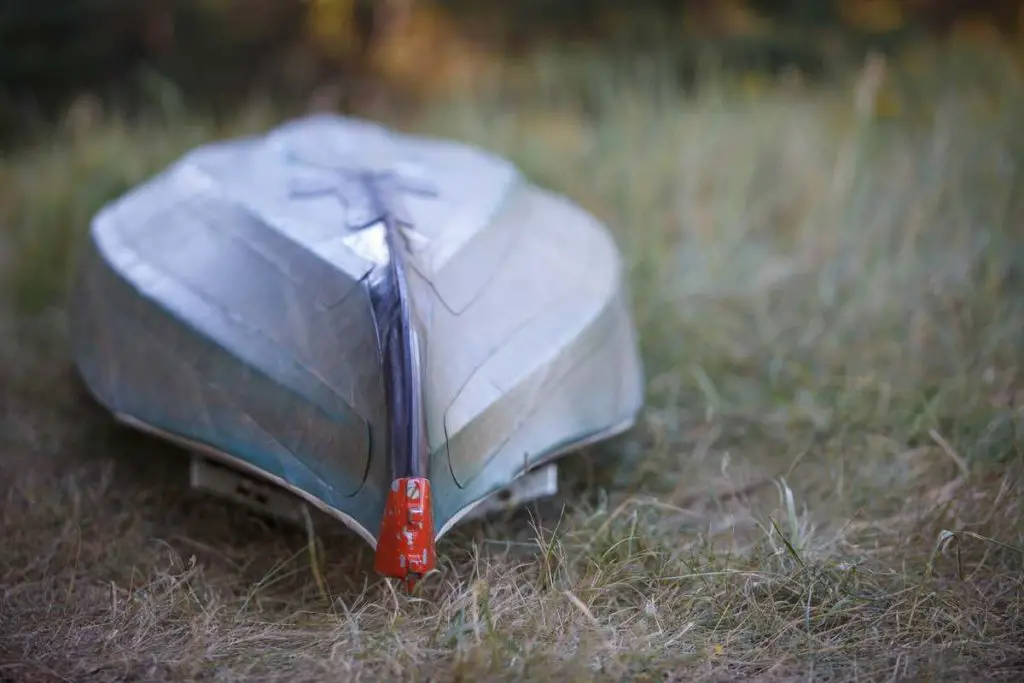Kayaking is a great sport and recreational activity, even for beginners. You only need to learn a few basic skills to enjoy this pastime. People across the globe like kayaking as a favorite item to tick off their bucket lists during vacations.
Flat-bottom kayaks are perfect for starters because they are relatively stable and straightforward to manage. They don’t run too fast since flat bottom kayaks have more significant surface contact with water, thus, more resistance.
If you’re interested to learn more about flat-bottom kayaks, this article will tell you what you need to know.

What Makes a Kayak Stable?
Generally, a kayak’s stability is greatly affected by its length, width, and volume. A flatter and wider kayak offers more stability due to more surface contact. You can consider a kayak stable if it can resist rolling or capsizing.
A kayak has many parts that contribute to its stability, but the most important one is the hull. A hull is what you call the bottom part of the kayak.
There are four primary types of kayak hulls, and we will discuss each in the next section.
Your kayak may become unstable for a number of reasons. If you’ve ever had this problem, read my guide to learn how to avoid it. [Why is Your Kayak So Unstable? XX Common Reasons]
What Are the Primary Types of Kayak Hulls?
Kayak stability varies depending on the hull and specifically the type of hull. There are four primary types of kayak hulls, namely:
- V-Shaped Hulls
- Pontoon Hulls
- Flat Hulls
- Rounded Hulls
V-Shaped Hulls
As its name suggests, this kayak hull has a deep V shape that allows the bottom of the kayak to cut through water and glide faster. This is a popular hull primarily used for racing and long-distance kayaking.
Like when learning to ride a bike, beginners may find it challenging to find their balance at first. Once you start paddling and moving forward, you become more steady and gain more stability with the V-shaped hull kayak.
Pontoon Hulls
Pontoon hulls are sometimes also called “double hull,” “tunnel hull,” or “dual hull” due to their unique bottom design, which is an inverted U-shape.
Kayaks with pontoon hulls combine the attributes of a round hull and flat hull, making it one of the best kayaks for fishing and recreational activities like water tours. One of the best advantages of pontoon hulls is that they offer both speed and stability to kayaks.
Flat Hulls
Flat hulls are the best types of kayaks for beginners. They have a wider bottom which offers excellent primary stability, especially for those new to kayaking or people who require a steady float.
Flat hulls are notably slower due to higher water contact than other hull types. However, they are easier to maneuver and perfect for laid-back and relaxed kayaking.
Rounded Hulls
The rounded hulls have torpedo-like bottoms, offering lesser water resistance and, therefore, a faster speed than flat-hull kayaks.
Their rounded shape offers excellent maneuverability, especially for rough water conditions. This kayak hull is often used for harsh water conditions, such as whitewater paddling.
What Are the Different Types of Kayaks?
There are two main categories of kayaks. These are flat water and white water kayaks.
Flat Water Kayaks
Flat water is slow-flowing, calm, and without much disturbance, such as big waves or strong currents. The flat water kayaks are built for this type of water.
Here are some examples of flat-water kayaks:
- Sit-on or sit-in kayak
- Recreational kayak
- Touring kayak
- Inflatable flat water kayak
Let’s explore each option further:
- Sit-on-top kayaks. These are easier to get in and out of since they have an open cockpit where you can position yourself directly on top. Sit-in kayaks, on the other hand, place the paddler inside the hull where you can keep your legs dry. Depending on the weather and the type of activity, sit-on and sit-in kayaks give you an option of whether or not you wish to keep yourself dry.
- Recreational kayaks. These feature an open cockpit that is spacious and non-confining. The kayaks are not built for speed, but they are a suitable choice for leisure kayaking as they have good balance when treading in calm waters. Generally, most recreational kayaks are less than 10 feet long (3.05-3.7 meters).
- Touring kayaks. These are usually at least 12 feet (3.7 meters) in length and have a narrow beam. This makes the touring kayak one of the fastest (and most expensive) kayaks. However, due to its length, tight turns are hard to make. Touring kayaks don’t have much maneuverability, but most models have a built-in rudder to help them steer.
- Inflatable kayaks. These kayaks come in either sit-on or sit-in models. They are mainly designed for recreational use. You can deflate and fold this type of kayak to make it portable and more convenient to carry around.
White Water Kayaks
White Water, on the other hand, means turbulent waters, such as rapids and waterfalls. Strong waves and currents cause a frothy white appearance, thus, the name white water. These kayaks are built for rough waters.
There are four standard white water kayaks:
- Playboats
- Creek boats (Creekers)
- Old School Kayaks (Long Boats)
- Inflatable Whitewater Kayaks (Duckies)
Let’s discuss each type:
- Playboats. These are specialized canoes or kayaks used in white water sports where paddlers do some entertaining tricks. Playboating is also referred to as freestyle kayaking.
- Creek boats. These are high-volume kayaks that have large decks to ensure quick resurfacing in case either end of the boat gets submerged in water. They are best for hunters, fishermen, wildlife photographers, and other outdoor professionals.
- Old school kayaks. From the name, these kayaks were made in the ’80s and ’90s. They go from 10 to 12 feet ( 3.04 to 3.66 m) in length and can be used for fishing and recreation. These kayaks come at a low price, too.
- Inflatable whitewater kayaks. These kayaks are versatile and can be used in flat water or whitewater kayaking. They can withstand hard impacts and crash into massive waves without breaking. Consequently, they are widely used for rough waters and powerful rapids – durability is one of their assets.

Final Thoughts
Different factors affect the stability of kayaks. Flat-bottom kayaks typically provide you with a good balance. Still, they have a downside when it comes to speed and maneuverability.
Ultimately, choosing the right kind of kayak is essential if you want to make the most out of your experience.
Sources
- American Kayaking Association: Different Types of Kayaks
- Kayak Help: 13 Different Types Of Kayak Hulls
- Paddling Magazine: Types Of Kayak Hulls—And Why They Matter
- Kayaking Expert: 4 Kayak Hull Types You Should Know
- Moosejaw: Everything You Need to Know About the Different Types of Kayaks
- Boat Safe: Types of Kayaks – Recommendations and Buying Guide
- Kayak Help: Different Types of Kayaks: What are they?
